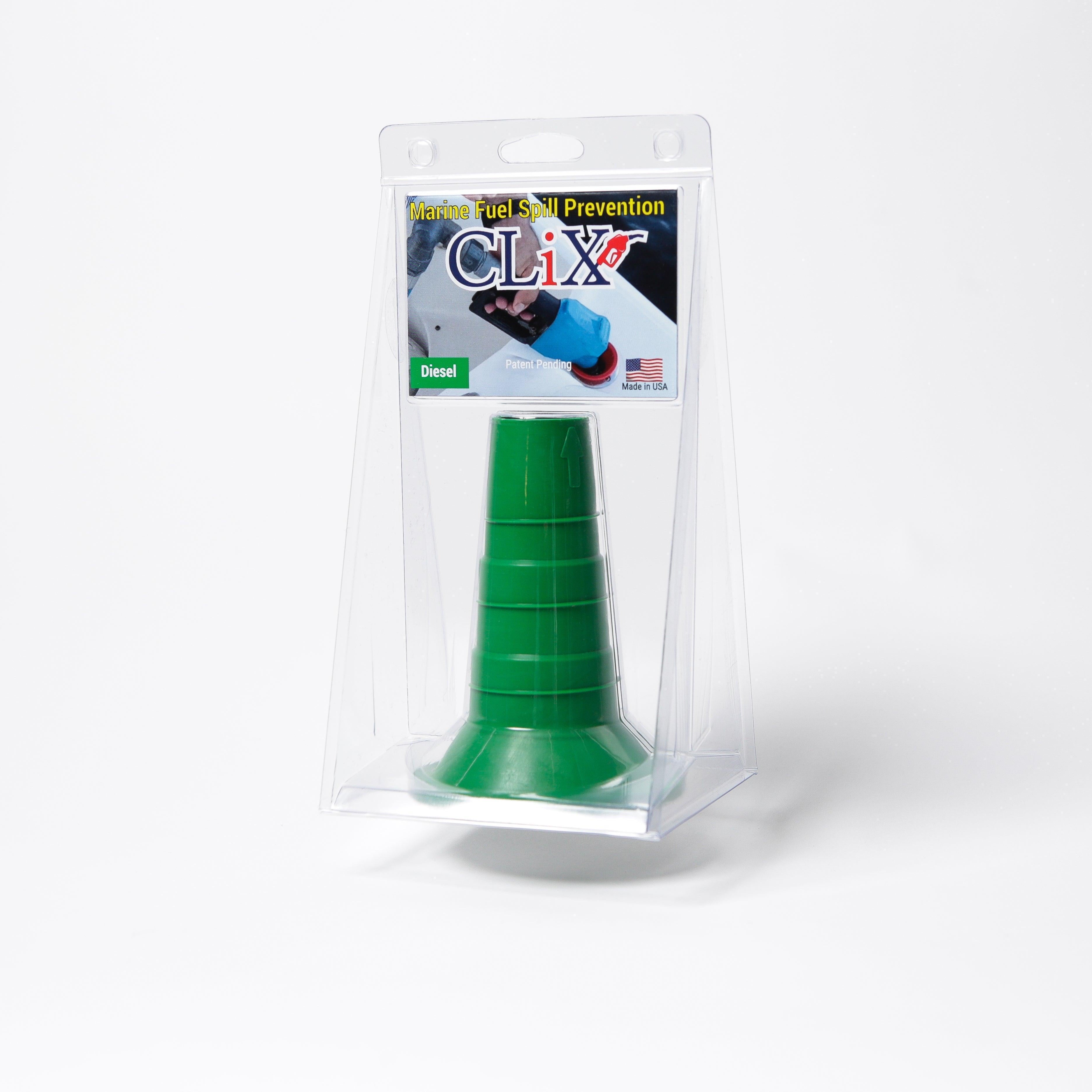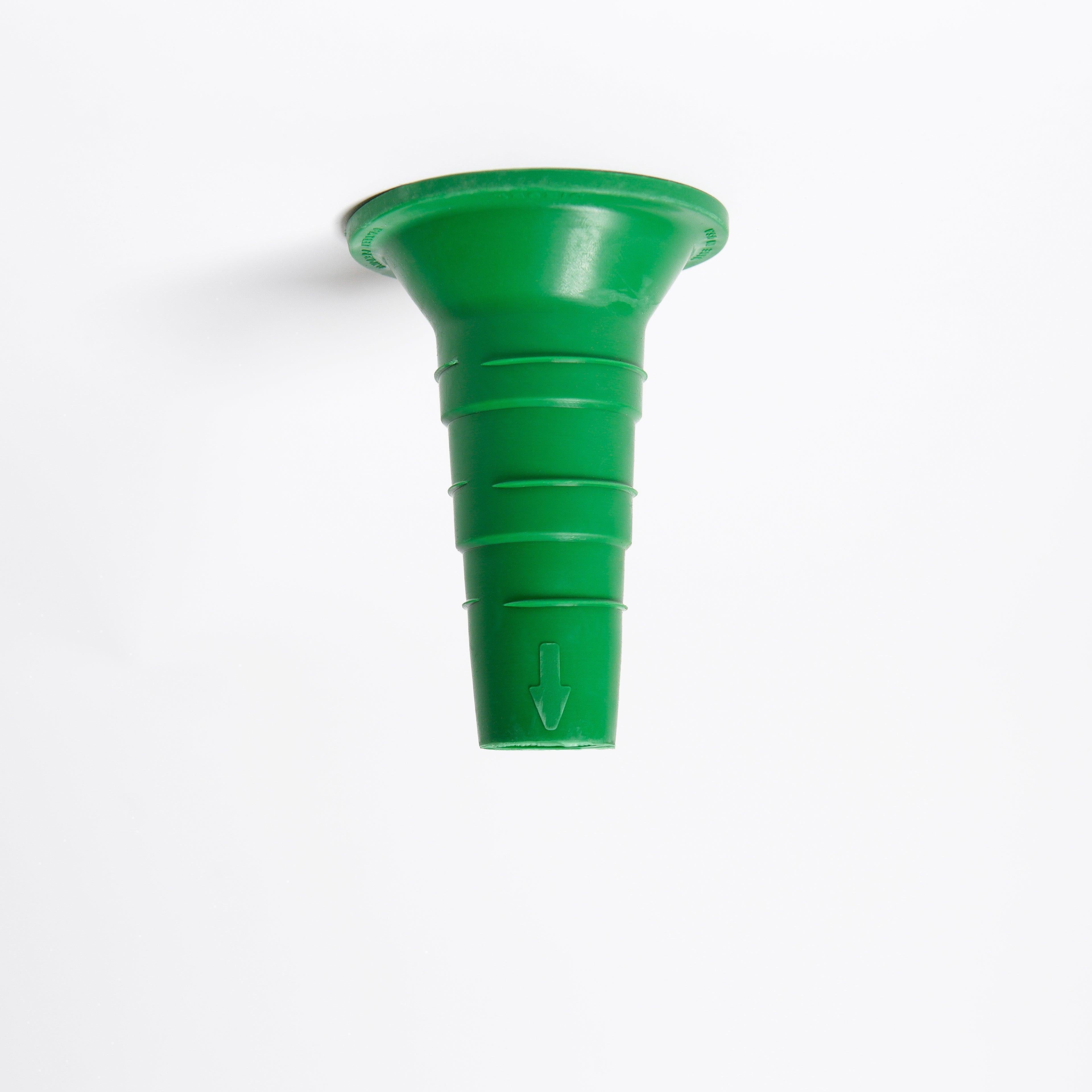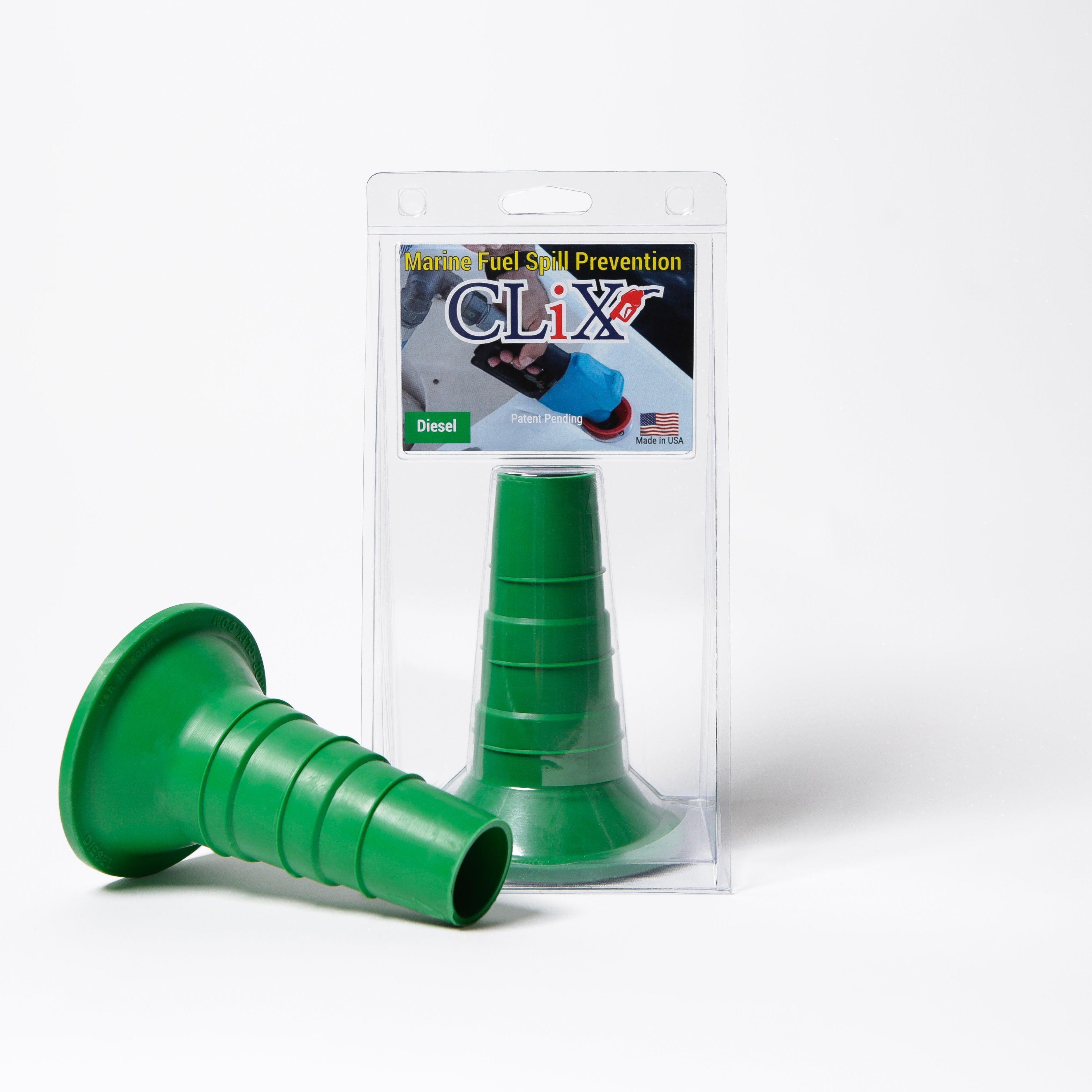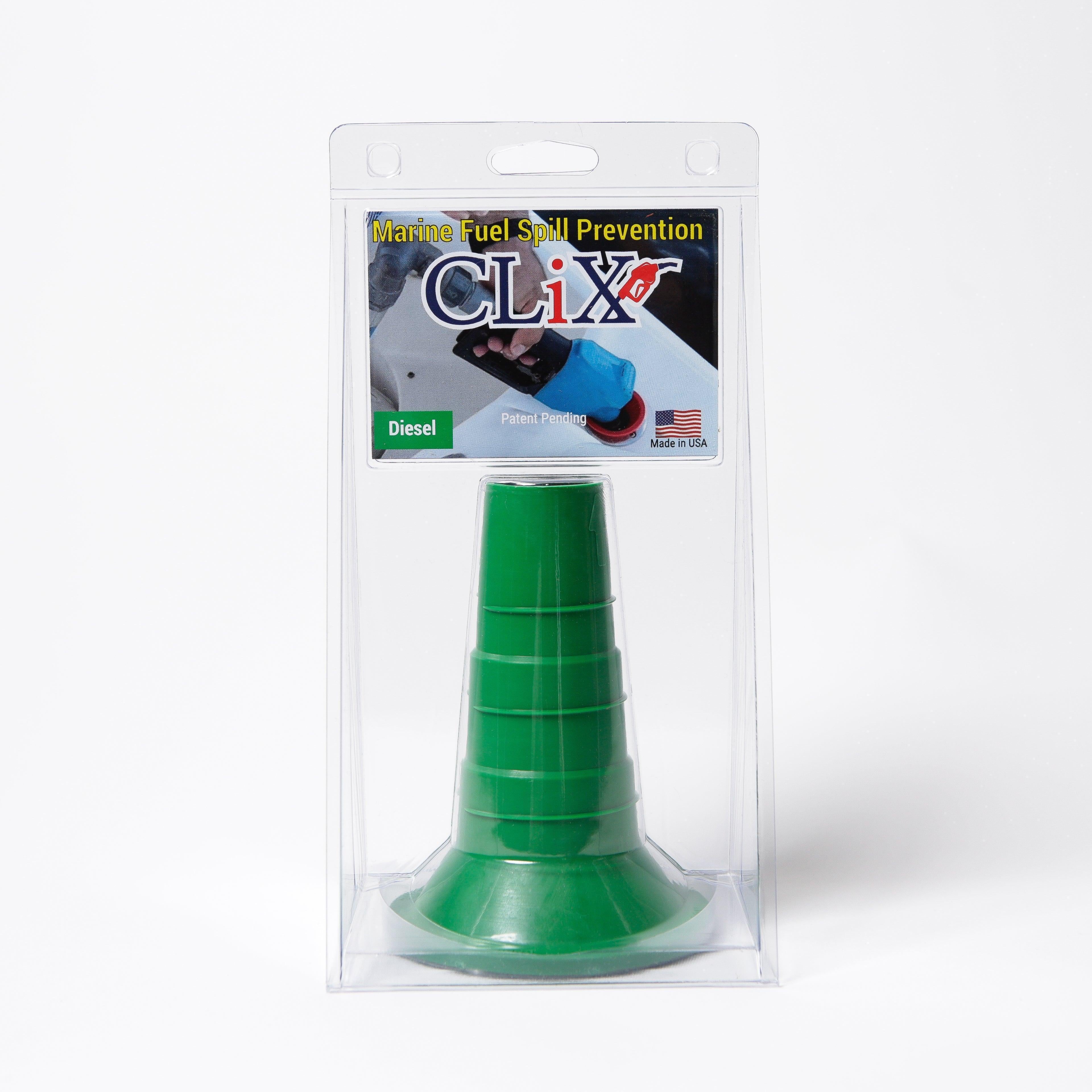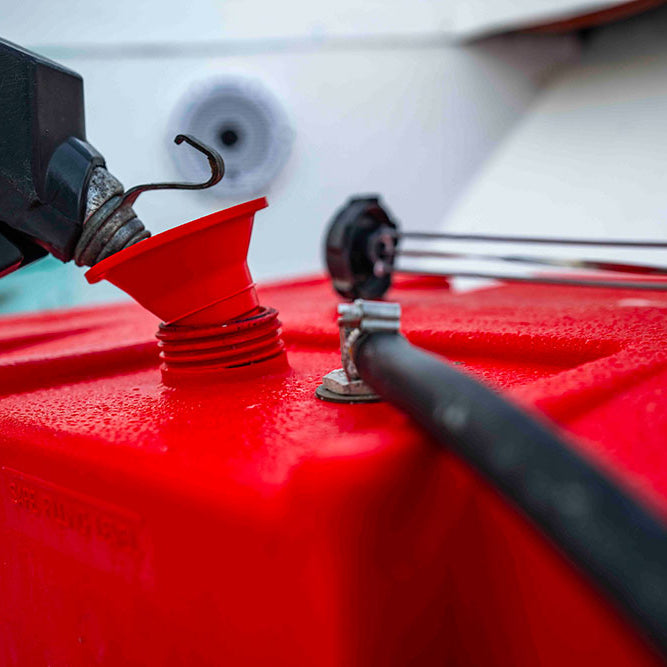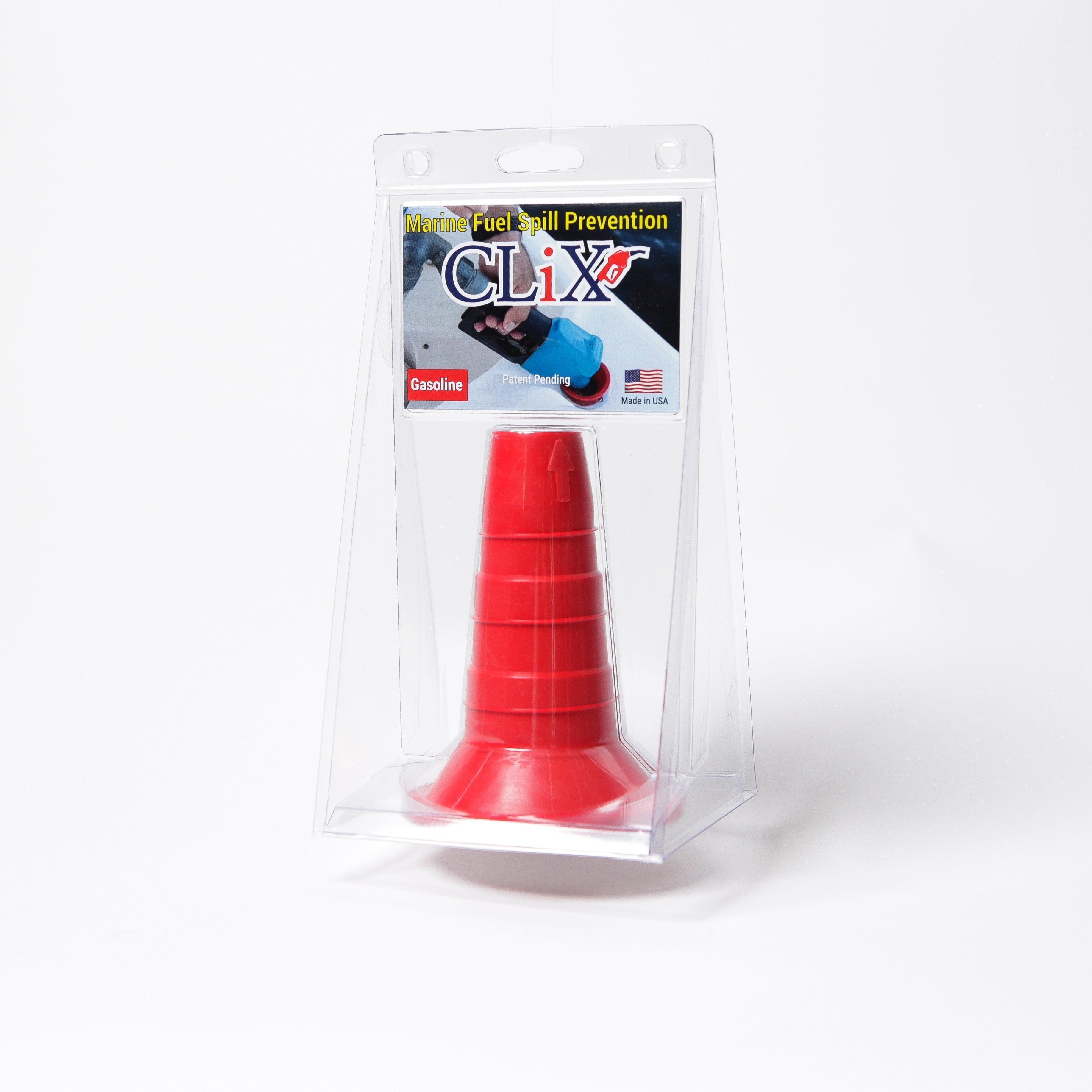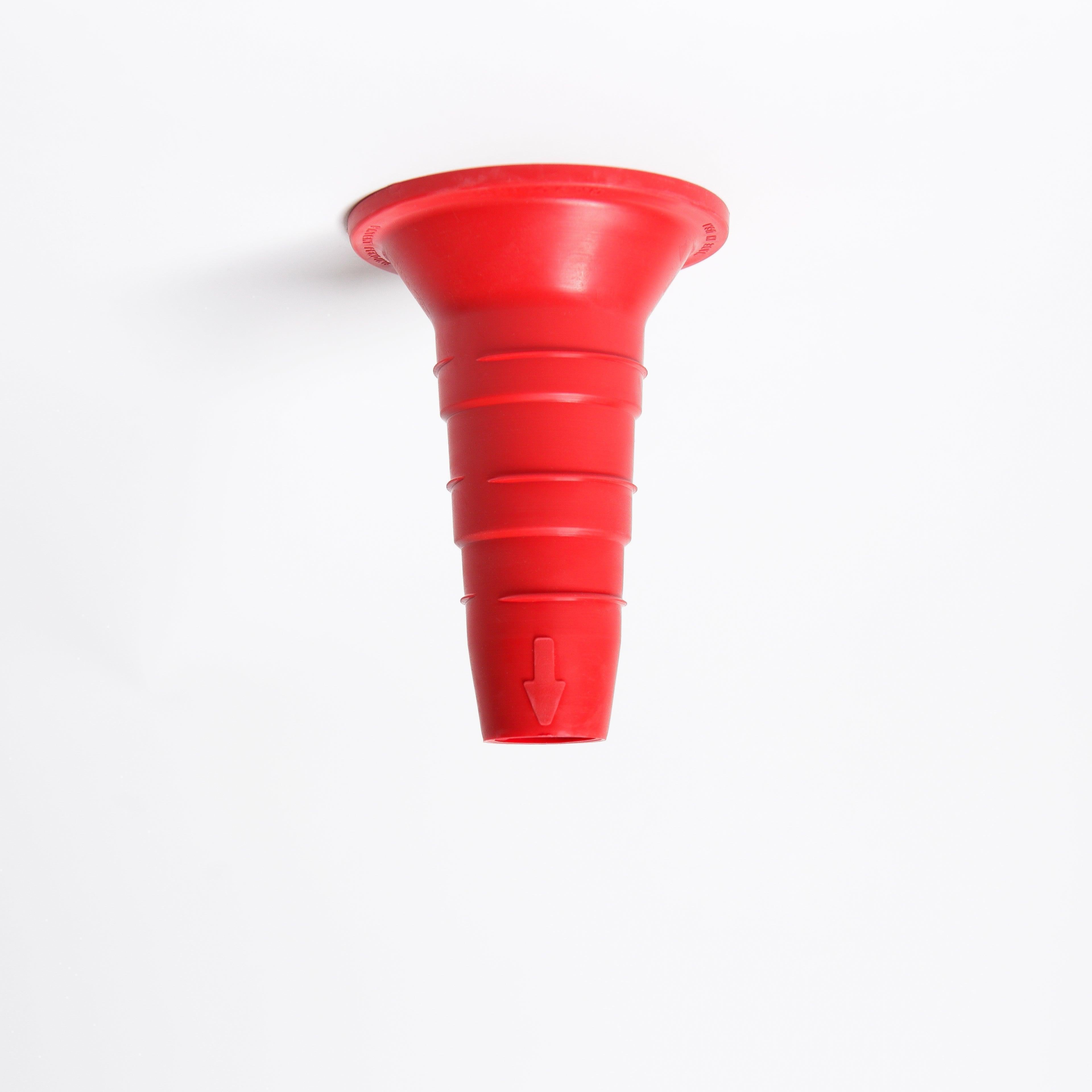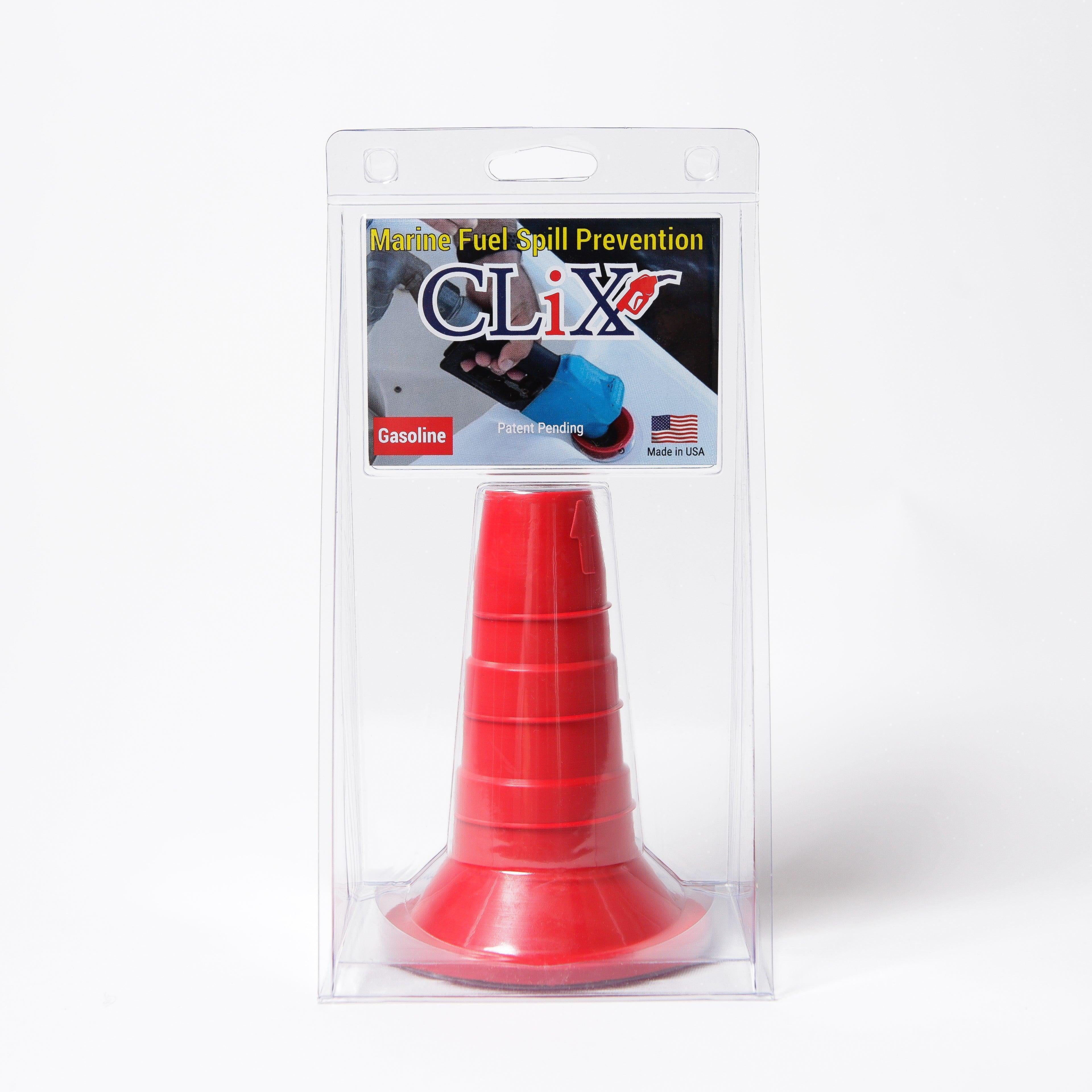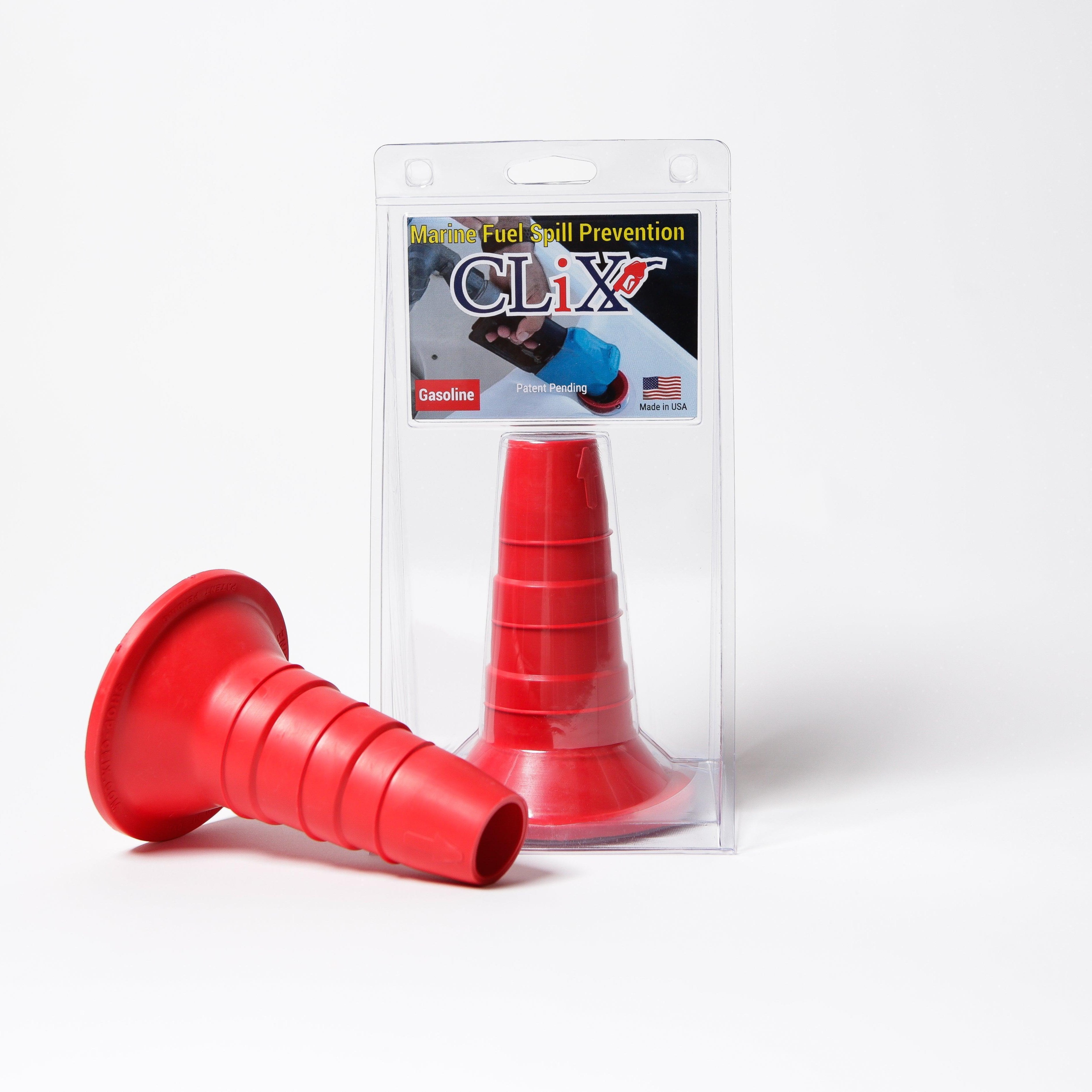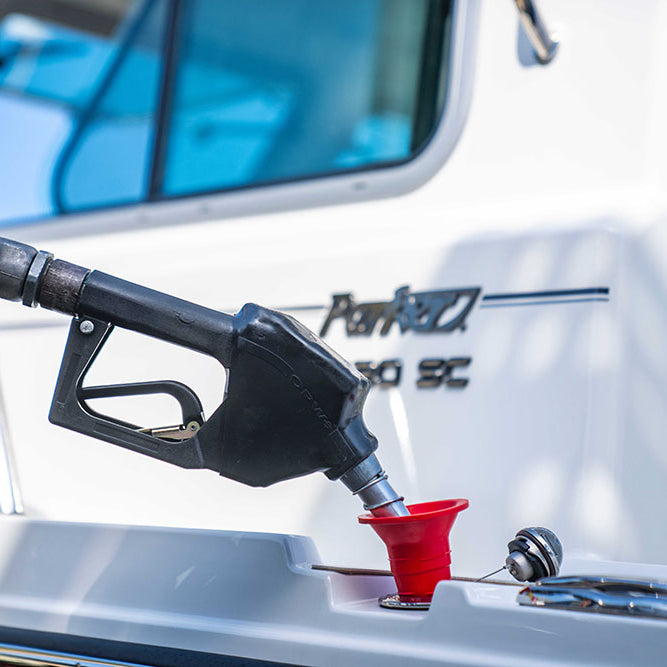Let's face it, filling up your boat's gas tank is often a messy, frustrating chore. We’ve all been there—dealing with spills, choking on fumes, and constantly worrying about that sudden "burp" of fuel that signals an overfilled tank. For any boater, a clean and efficient fueling process is absolutely essential to protect your boat, your wallet, and the water we all enjoy.
A Better Way to Fill Your Boat's Gas Tank
The old way of fueling a boat just feels clunky. You're stuck holding a heavy gas can or a dockside nozzle, trying to listen for the gurgle that means the tank is almost full. Too often, you're rewarded with a splash of expensive gasoline all over your deck. It’s more than just an annoyance; it's wasteful and bad for the environment. Even small spills contribute to water pollution, and gasoline is notorious for damaging your boat’s gelcoat and stripping away its protective wax.
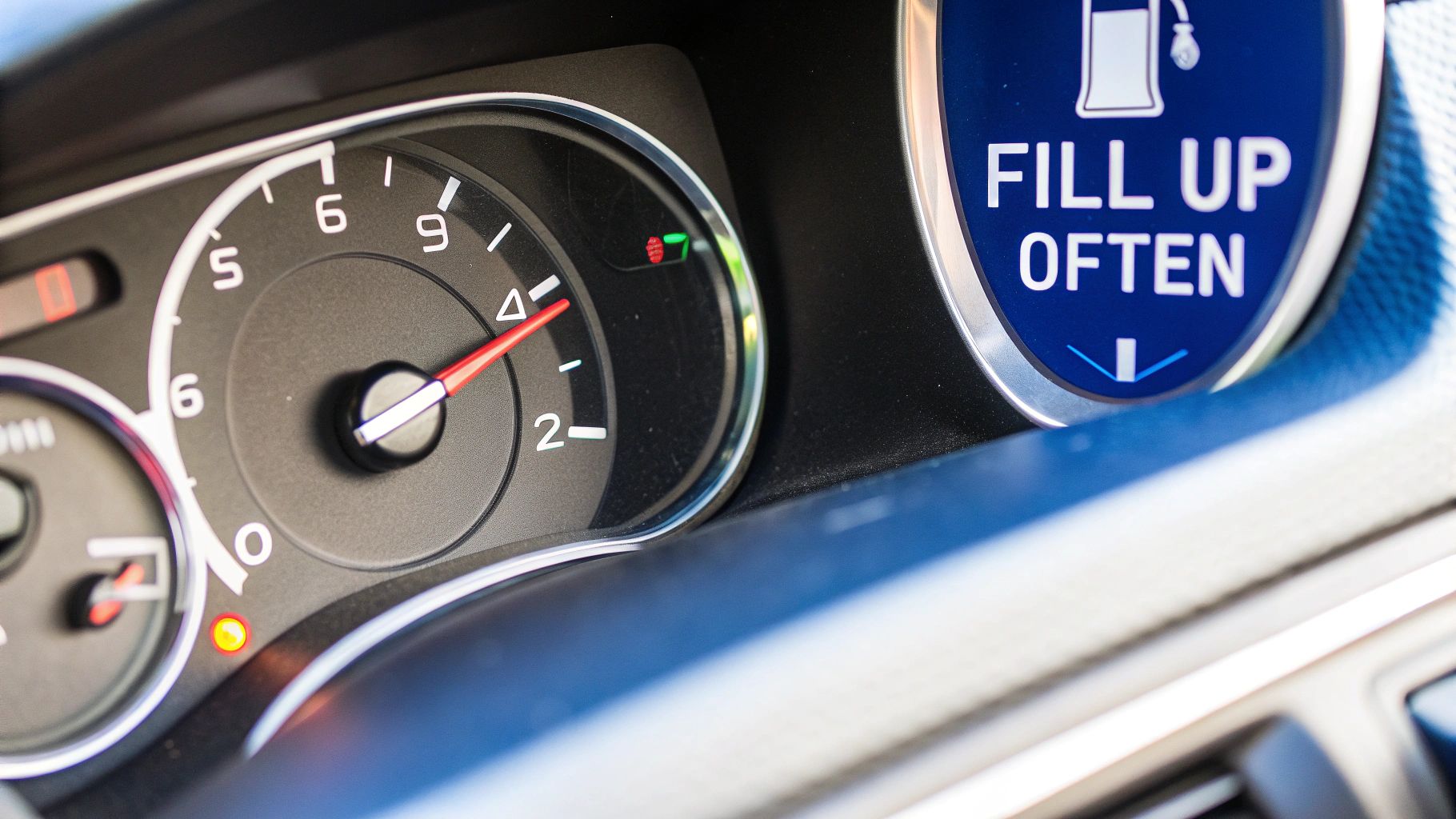
And who enjoys that lingering smell of gasoline on their hands and clothes for the rest of the day? It's exactly these common headaches that led to the development of better, modern fueling solutions.
The Shift to a Sealed Fueling System
The secret to a cleaner, easier fueling experience is a sealed, spill-proof connection. Instead of an open system that practically invites drips and overflows, modern systems like CLiX are engineered to take the guesswork out of the equation. It’s like the difference between pouring water from a bucket and connecting a sealed hose—one is precise and controlled, the other is a recipe for a mess.
This smarter approach delivers some immediate wins:
- Zero Spills: A sealed connection means fuel flows directly from the pump into your tank. No exposure to the air, and more importantly, no spills on your deck.
- Automatic Shut-Off: The best systems automatically stop the fuel flow the second your tank is full, completely preventing those costly and dangerous overfills.
- Contained Fumes: Harmful gasoline vapors are kept inside the system, making the whole process safer and much more pleasant for everyone at the dock.
By eliminating the weak points of traditional fueling, you can transform what was once a stressful chore into a simple, clean, and reliable part of your boating routine.
Ultimately, mastering the fueling process is about adopting technology that just works better. It's about taking control and making sure every single drop of fuel ends up where it belongs: safely inside your tank. This modern approach finally turns fueling from a necessary evil into a quick and confident task.
Before You Fuel: The Pre-Pump Checklist
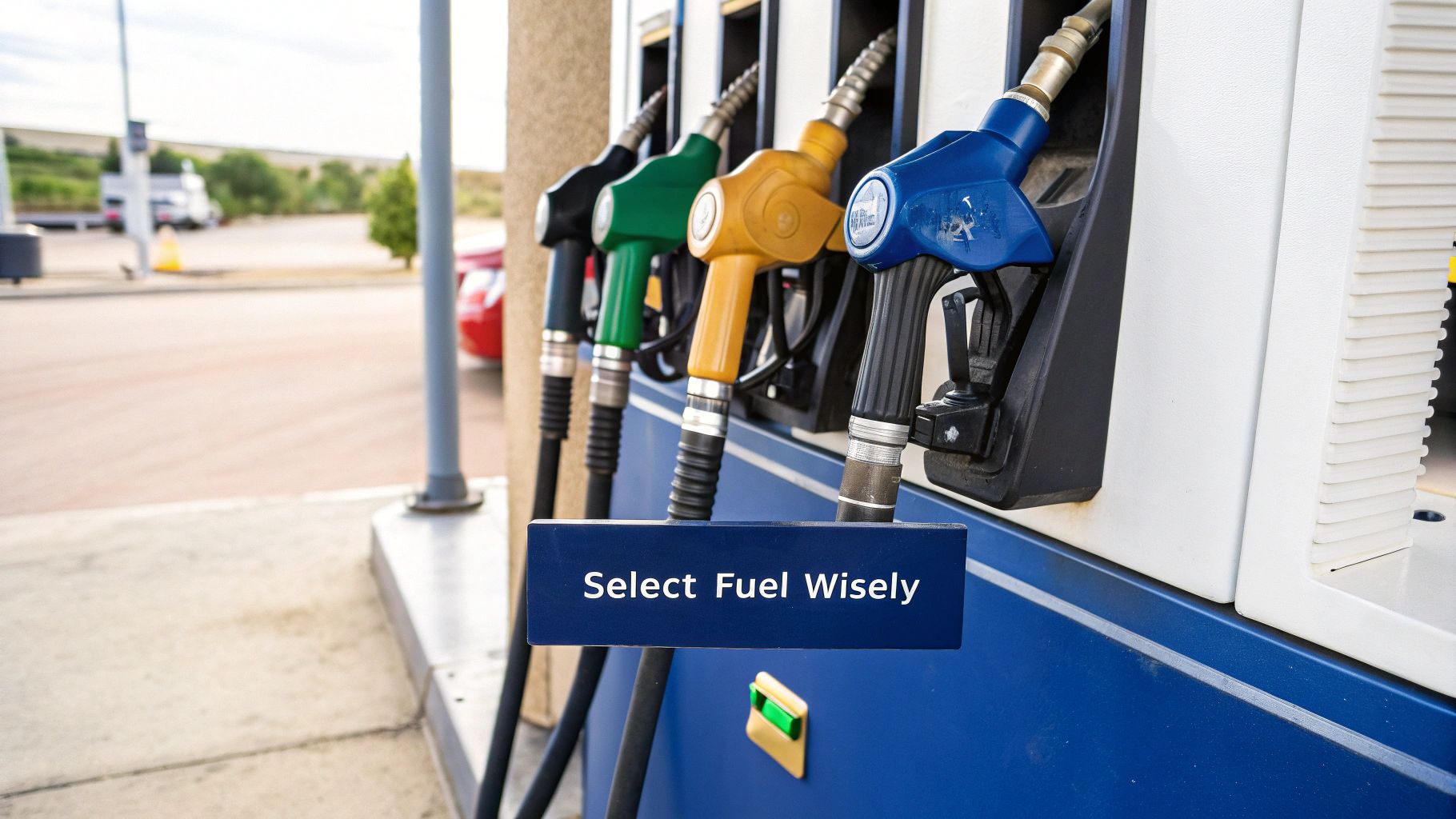
A clean, spill-free fill-up starts well before you even grab the gas nozzle. I like to think of it like a pilot's pre-flight checklist. Taking a minute to run through a few simple steps on the dock is what separates a smooth refueling from a messy, frustrating one.
First things first, get your boat properly secured. A drifting boat is a recipe for a fuel spill. Make sure your mooring lines are snug and your fenders are in place to prevent any bumps that could knock the nozzle loose.
Next, kill all power. That means turning off the engine, all electronics, and anything else that could create a spark. And this should go without saying, but absolutely no open flames—put out those cigarettes and turn off the galley stove.
Give Your Gear a Quick Once-Over
Before you connect the nozzle, take a good look at your equipment. Inspect the CLiX nozzle and your boat's fuel receiver. You're looking for any dirt, gunk, or damage, paying close attention to the O-rings. A clean connection is the key to that perfect, leak-proof seal.
This is also the moment to grab some absorbent pads and have them ready, just in case. Even with a system as secure as CLiX, it’s just smart boating to be prepared for the unexpected.
Pro Tip from the Docks: I always make it a habit to touch a metal part of the fuel pump before I start. It's a simple way to ground yourself and discharge any static electricity that could ignite gas vapors. Better safe than sorry.
It’s easy to forget just how much fuel we all use. In 2024, global demand for crude oil was around 104.46 million barrels per day. Handling it safely is our responsibility.
Finally, a big part of preparation is knowing the condition of your tank. For a deeper dive, check out our comprehensive boat fuel tank guide for tips on choosing and maintaining it. Making these quick checks a routine will set you up for a perfect fill-up, every single time.
Executing a Perfect Spill-Proof Connection
With your pre-fueling checks out of the way, it’s time for the main event: actually filling the tank. This is where the CLiX system really proves its worth, transforming what can be a nerve-wracking task into a simple, confident process. You can stop worrying about listening for gurgles or watching the fuel gauge like a hawk; this is all about making a secure, sealed connection.
Your first move is to line up the CLiX nozzle with your boat’s fuel receiver. Don't just jam it in there. Guide it smoothly until you hear a very distinct and satisfying 'click'.
That sound is your confirmation. It tells you that you've got a perfect, vapor-tight seal. The system is fully engaged, meaning not a single drop of fuel or fume is going to escape.
Now that you're connected, you can start fueling with confidence. Squeeze the pump nozzle's handle and just let the system do its thing. There's no need to feather the trigger or try to guess when the tank is getting full. The beauty of this sealed connection is how it manages the entire process for you.
Initiating and Monitoring the Flow
The biggest difference you'll notice from the old way of fueling is the peace of mind that comes from the automatic shut-off. As your tank gets full, the system senses the change in pressure and instantly cuts off the fuel flow.
If you've ever experienced that messy, frustrating "burp" of gasoline from a tank vent, you know this is a total game-changer. You can dig deeper into how a fuel nozzle auto shut-off works to understand why it’s so critical for a spill-free day on the water.
This visual breaks down the core actions for a clean and safe fill-up.
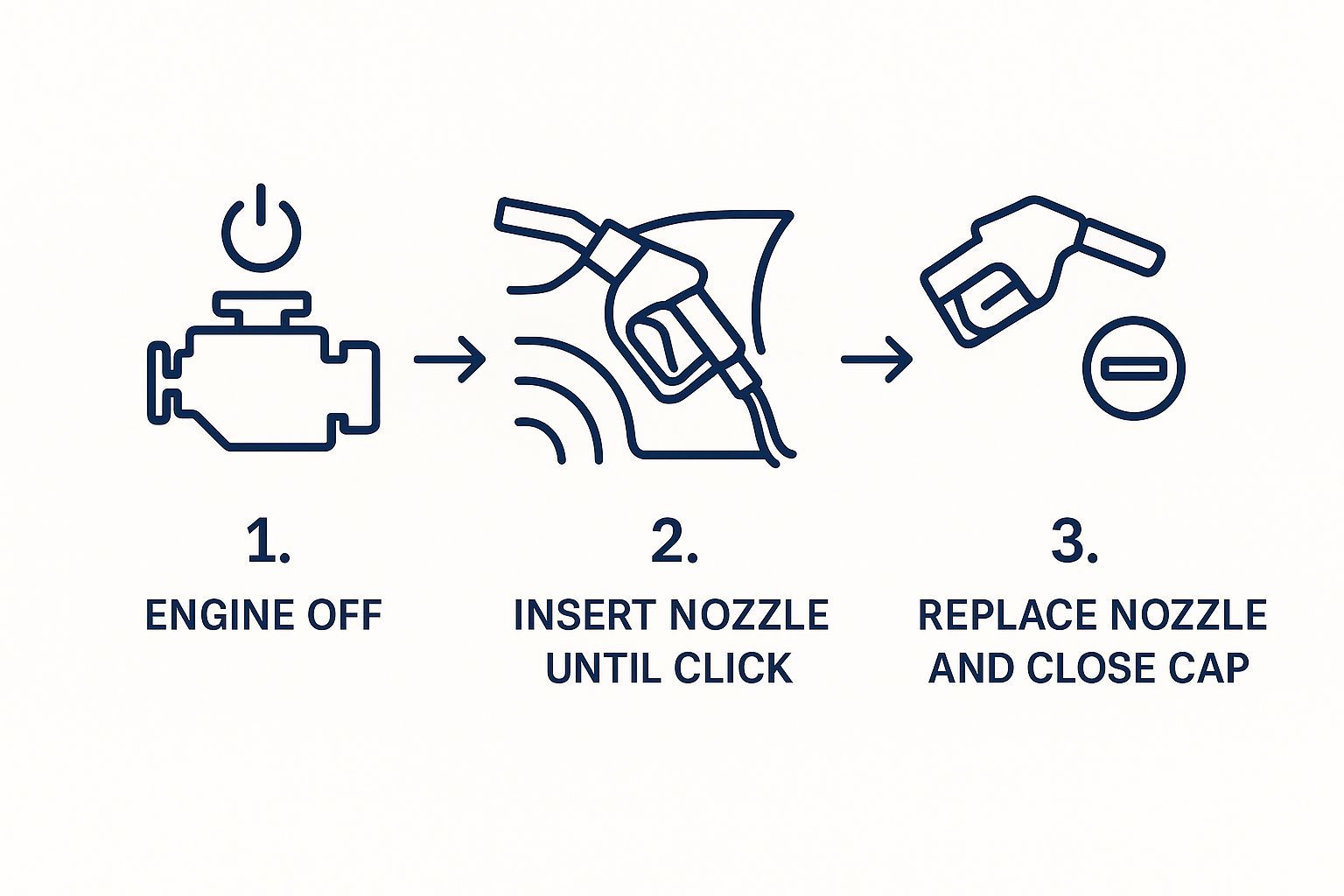
By following these three simple cues—engine off, listen for the click, and secure the cap—you're preventing the most common mistakes that happen at the fuel dock.
To help you get it right every time, here’s a quick summary of the 'what' and 'why' behind each step in the process.
Key Actions for Spill-Free Fueling
| Action | What to Do | Safety Benefit |
|---|---|---|
| Align and Connect | Gently guide the CLiX nozzle into the fuel receiver. | Ensures a proper fit and prevents damage to the O-rings and locking mechanism. |
| Listen for the Click | Push firmly until you hear a distinct 'click' sound. | Confirms the system is fully sealed, preventing vapor leaks and potential fuel spills. |
| Squeeze and Hold | Squeeze the fuel pump handle fully and let the auto shut-off work. | Allows the system to manage fuel flow and prevent overfilling or "burping" from the vent. |
| Disconnect Cleanly | Release the handle, then press the CLiX release button to disconnect. | Ensures a clean break with no drips, keeping your boat and the water clean. |
Following these key actions turns a potentially messy chore into a clean, simple, and safe routine.
Trust the click. When you hear it, the system is locked and sealed. Trying to force it will only cause damage, but a gentle, firm push is all you need to create that perfect connection. It's a small detail that makes a massive difference in both performance and safety.
Remember, the goal here is to let the technology do the work for you. When you follow these steps, you’re doing more than just filling a tank—you're being a responsible boater by keeping fuel out of the water and protecting your investment.
Pro Tips for Managing Your Fuel Like a Seasoned Skipper
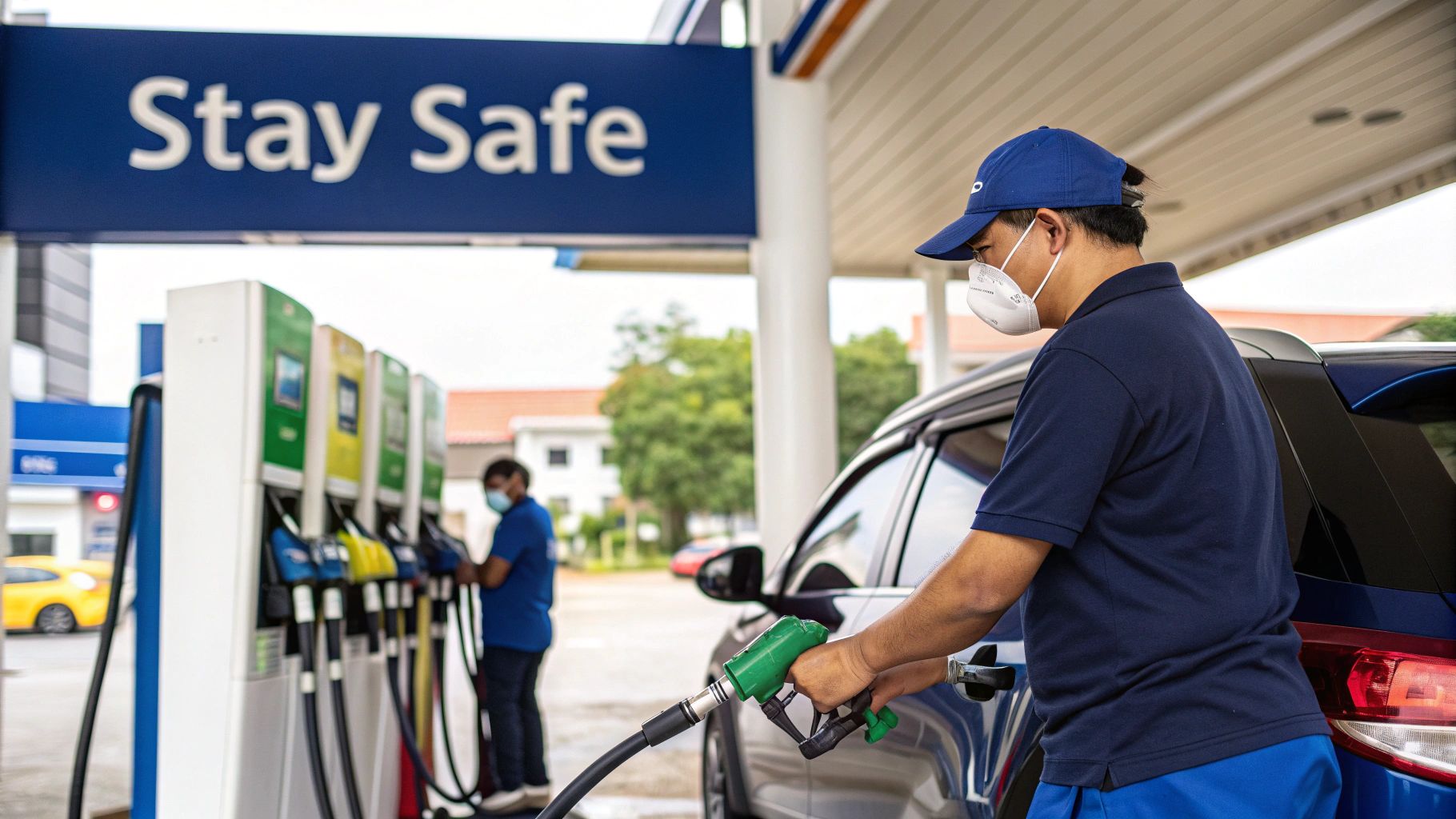
Once you've got the basic connection down, a few extra techniques can really dial in your fueling process. Let's be honest, conditions at the fuel dock are rarely perfect. Knowing how to handle a busy Saturday afternoon or a stiff breeze is what sets experienced boaters apart.
For example, if it's windy, try to position your boat so the wind blows any fumes away from the dock and other people. And if the dock is crowded, have your payment ready and your lines set for a quick getaway. It's just good etiquette.
Know Your Boat’s Thirst
A huge part of smart fuel management is knowing your boat’s consumption rate inside and out. Don't just trust the fuel gauge—they're famous for being unreliable. The best way is to track your engine hours against the gallons you fill over several trips. This lets you calculate your true gallons-per-hour (GPH).
Once you know that number, you can accurately predict your range and plan your trips with confidence. It's the difference between guessing you have enough fuel and knowing you do, which is everything when you're miles from shore.
Aim to fill your tank to about 90% capacity, not all the way to the top. This is a classic boater’s trick that leaves room for fuel to expand on a hot day, preventing pressure buildup and messy spills from the vent.
The Disconnect: A Spill-Proof Finish
The final step—disconnecting—is just as crucial as connecting. After the pump clicks off, the CLiX system keeps the line sealed tight. To release it, you just press the button. You'll get a clean, drip-free break every time, leaving your deck completely spotless.
Maintaining the system is a breeze, too. Just give the O-rings inside the nozzle and receiver a quick look-over for cracks or gunk. A simple wipe-down keeps the connection clean and ensures a perfect seal for your next gas tank filling. This small habit goes a long way in keeping your gear reliable for years to come.
Why Bother with a New Fueling System?
Let’s be honest, fueling up the boat has always been a bit of a messy chore. We’ve all been there—that sudden "burp" of fuel shooting out of the tank vent, the rainbow-colored sheen of gasoline spreading across the water, and that unmistakable smell that seems to follow you around for the rest of the day.
These aren't just small hassles. They're signs of wasted fuel, potential damage to your boat's gelcoat, and real harm to the very waterways we love. The old way of just sticking a nozzle in the tank and hoping for the best is sloppy and unpredictable.
A Better Way to Fuel Up
This is where a sealed system like CLiX completely changes the game. It’s a clean, efficient, and honestly, a much calmer way to handle fueling. Instead of guessing when the tank is full, you get a solid, spill-proof connection that traps every last drop and all the fumes. It's a simple upgrade that makes a world of difference.
This move toward smarter, cleaner technology isn't unique to boating. You can see a similar shift when you start comparing gas and electric golf cart options, where efficiency and environmental impact are driving big changes.
The best part is the peace of mind. You know the connection is secure, the shut-off is reliable, and the whole process is clean from start to finish. It turns a task you dread into a quick, professional job.
Even with new energy sources on the horizon, gasoline isn't going away overnight. Global demand is projected to hit its peak in 2025 at roughly 28 million barrels per day. As vehicle efficiency improves and policies change, how we handle fuel becomes even more critical. You can learn more about global fuel market trends on spglobal.com.
At the end of the day, modernizing how you fuel your boat is a smart move for safety, cleanliness, and your own sanity.
Common Questions About Filling Your Boat’s Gas Tank
When you've been filling your boat's gas tank the same way for years, it's normal to have a few questions about switching to something new. I get it. Boaters often ask me if a modern system like CLiX will even work with their older vessel or how it really stacks up against the old-school way. Let's clear the air on some of those common concerns.
One of the first things people ask is about installation. They'll say, "I've got a classic boat, can I even install one of these?" The answer is a resounding yes. These systems are specifically designed to be retrofitted. You're usually just swapping out your standard deck fill, making it a surprisingly simple upgrade for just about any boat out there.
Then comes the question of trust. How does a sealed system actually stop an overflow before it happens? It's not magic—it’s a smart, automatic shut-off. The system knows the second your tank is full and instantly cuts the fuel flow. This is a world away from trying to listen for that "gurgle" that means you're about a half-second from a messy, and potentially costly, spill. For a deep dive into this, you should check out our complete guide on boat fueling safety.
Thinking About Fuel Use and System Upkeep
It also helps to think about the broader context of fuel efficiency. With worldwide motor gasoline demand projected to hit around 27.3 million barrels per day by 2025, every drop counts. Making sure we fuel efficiently isn't just a convenience; it's a responsible practice. You can actually see the full global gasoline demand forecasts on Statista.
What about keeping the system in shape? I get asked this a lot. The maintenance is incredibly straightforward. Just give the O-rings a quick check for wear and tear now and then, and keep the parts clean. That's really all it takes to guarantee a perfect seal and flawless performance every time you're at the fuel dock.
At the end of the day, answering these questions just proves that modern fueling systems are designed with real boaters in mind. They’re practical, safe, and easy to use, making them a smart move for anyone looking to take the headache out of fueling. The whole point is to give you confidence and get rid of the guesswork.
Ready to make every fill-up a clean, simple, and stress-free experience? Discover how CLiX Fueling Solutions can transform your boating routine by visiting https://clixfueling.com.

